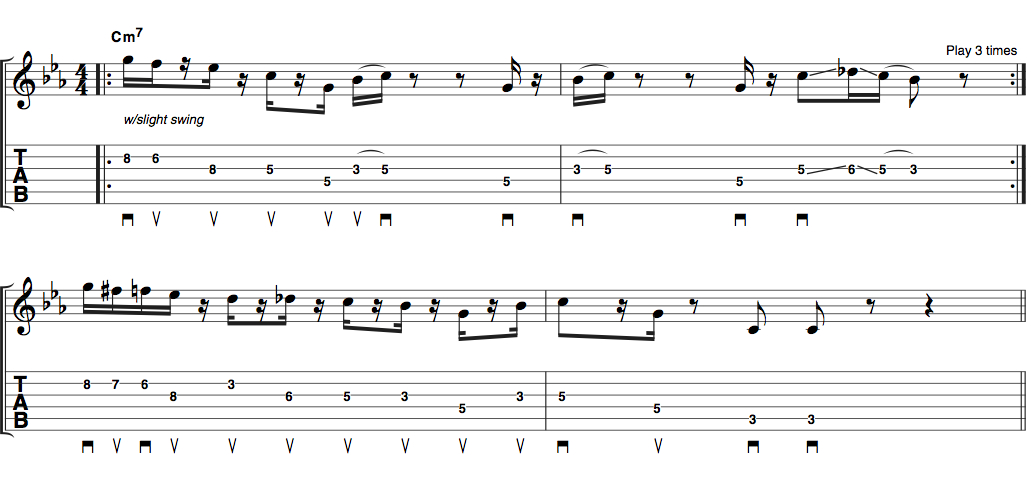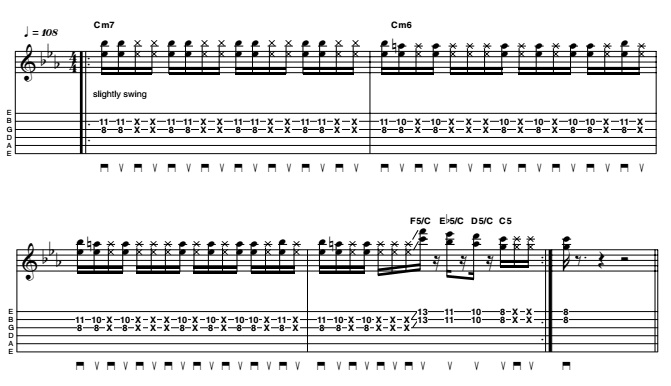Play funk guitar like Prince
Open up your playing by introducing a real sense of groove

If you were lucky enough to catch Prince live, you will know what a supremely talented player he was. Equally captivating, soulful and 'burn the house down' funky on record, Prince is an obvious launchpad to explore funk guitar from.
Musically diverse, he could turn his hand just as easily to up-tempo funk burners like Get Off, or My Name Is Prince, and rock riffers such as Let's Go Crazy and Peach, as he does to smooth ballads like Money Don't Matter Tonight and Thieves In The Temple.
Although Prince's skills developed throughout his career, the guitar prodigy showed an intense musicality right from the start. At just 19 years old, he wrote, performed and produced his first album (For You, 1978) pretty much single-handedly.
When it comes to music's more rhythmic orientations in relation to the guitar, Prince gives us plenty of choice. The guitar enigma seemed to absorb a number of styles ranging from those heard in bands like The Meters, Ohio Players, Parliament, and Chic, as well as from singers like James Brown, Barry White, Marvin Gaye and Isaac Hayes, taking them forward and moulding them into his own unique guitar style.
To uncover just a portion of the purple one's funkiness, we've crafted four playing examples that are typical of his guitar style, using the key of C minor with a mid-tempo swing feel of 108bpm. We suggest using a clean sound.
1. Powerchord stabs

Prince created arresting openings to his songs and this is an example of a technique he used during the late 80s. With strong clipped chords on the beat for the first bar, there is a shift up the fretboard and then a descent with powerchords. Make sure the chords are tight and that the rhythms are right on.
Powerchord stabs tab (right-click to download)
Want all the hottest music and gear news, reviews, deals, features and more, direct to your inbox? Sign up here.
2. Dorian chords

Prince often doubled guitar rhythms with keyboards for a big unison sound. This uses the funk move of Im-IV where the minor I chord (here Cm7) is followed by a sweet major IV chord (here F). This progression can be related to the C dorian scale with it's sweet major 6th degree, the A note. These chords are shown in two positions to add interest. Nail the offbeat F and Cm7 chords at the end of the fourth bar before repeating again.
Dorian chords tab (right-click to download)
3. Syncopated single notes

This uses the C minor pentatonic (C Eb F G Bb), but instead of using the ever faithful shape 1 version it moves seamlessly between shapes 5 and 4. Spend time getting your fingering sorted otherwise you may come a cropper!
Syncopated single notestab (right-click to download)
4. Funky dorian 16ths

We can't have a feature on Prince without a grinding 16th note workout! With a few squeezed doublestops and relentless strumming you can really swing here, only stopping for breath at the end of bar 4 where syncopated fourths supply the turnaround before you repeat. It may not be rocket science, but dorian grooving like this sure takes some beating if you want to max out with the funk.
Funky dorian 16ths tab (right-click to download)
MusicRadar is the number one website for music-makers of all kinds, be they guitarists, drummers, keyboard players, DJs or producers...
- GEAR: We help musicians find the best gear with top-ranking gear round-ups and high-quality, authoritative reviews by a wide team of highly experienced experts.
- TIPS: We also provide tuition, from bite-sized tips to advanced work-outs and guidance from recognised musicians and stars.
- STARS: We talk to musicians and stars about their creative processes, and the nuts and bolts of their gear and technique. We give fans an insight into the craft of music-making that no other music website can.
